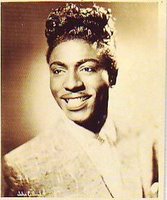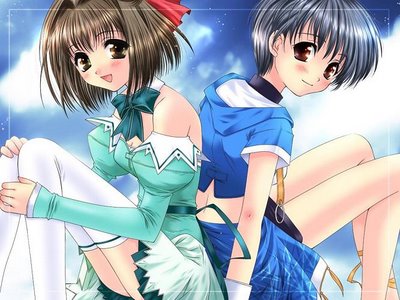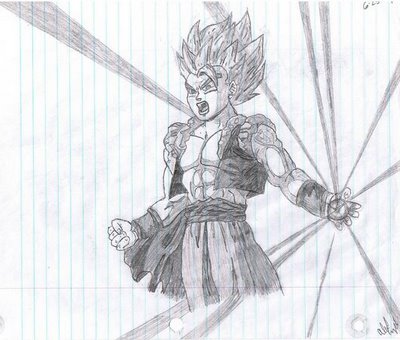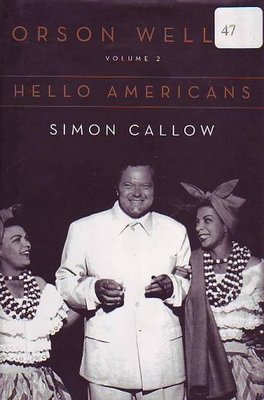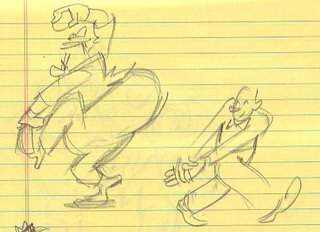 When I first got into the industry I was really impressed by some of the animatics I saw. I remember thinking, "Gee, you don't need to animate some of this stuff! The story is interesting even without animation! And without animation there'd be more time and money to make the drawings really good!" I remembered how much I liked "Crusader Rabbit" when I was a little kid and that was nothing more than a Leica reel. "Roger Ramjet" and "Astro Boy" confirmed the idea.
When I first got into the industry I was really impressed by some of the animatics I saw. I remember thinking, "Gee, you don't need to animate some of this stuff! The story is interesting even without animation! And without animation there'd be more time and money to make the drawings really good!" I remembered how much I liked "Crusader Rabbit" when I was a little kid and that was nothing more than a Leica reel. "Roger Ramjet" and "Astro Boy" confirmed the idea.Of course the biggest advantage of animatic films like anime isn't the low cost or even the potential for better drawings. The biggest advantage is that having no animation forces the filmmaker to look for other ways to make the film interesting. Even the least imaginative animatic makers are likely to consider drawings with drastic angles and stories with a Sergio Leone sensibility. Animatic producers tend to be more aggressive in their search for new ideas and audience-pleasing techniques. With no animation they have to be! You've gotta hand it to them, the animatic people made an asset out of a liability and generated a whole industry (anime) centered around animated films without much animation.
 So how does the rest of the animation industry compete with this? It seems to me that the natural way to compete with innovative still drawings is to create innovative moving drawings. That's what John did with "Naked Beach Frenzy," possibly the funniest cartoon made in the last half century. Funny moving drawings require a new way of writing stories. The stories actually have to be funny and they have to lend themselves to the type of humor that funny artists like to draw. Good plots may be less important than good opportunities for funny drawings. Well, it's a big subject and there's no space to cover it here.
So how does the rest of the animation industry compete with this? It seems to me that the natural way to compete with innovative still drawings is to create innovative moving drawings. That's what John did with "Naked Beach Frenzy," possibly the funniest cartoon made in the last half century. Funny moving drawings require a new way of writing stories. The stories actually have to be funny and they have to lend themselves to the type of humor that funny artists like to draw. Good plots may be less important than good opportunities for funny drawings. Well, it's a big subject and there's no space to cover it here.Following the lead of anime, it would be nice if cartoons containg funny movement would be cheaper to make. Sometimes I toy with the idea of making cheap, pencil test cartoon shorts. I don't know how often I've heard studio people say things like, "Well it was a lot funnier in the pencil test" or "You should have seen the pencil test!" The fact is that pencil tests are almost always far, far more funny and gutsy than the finished film they're subordinated to. The only problem comes with trying to color them. How do you put color on lines that are all over the place?




